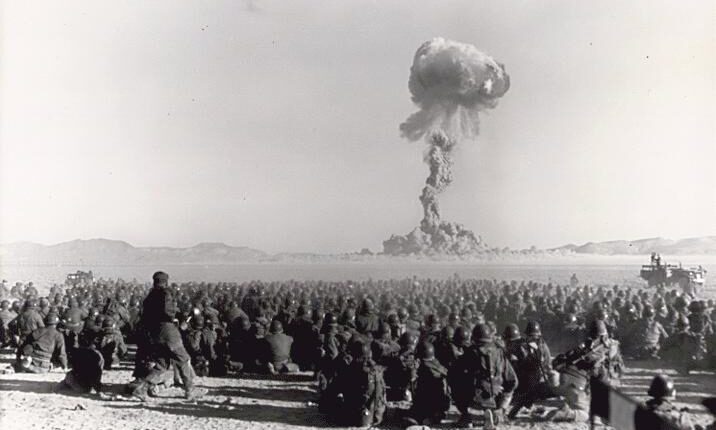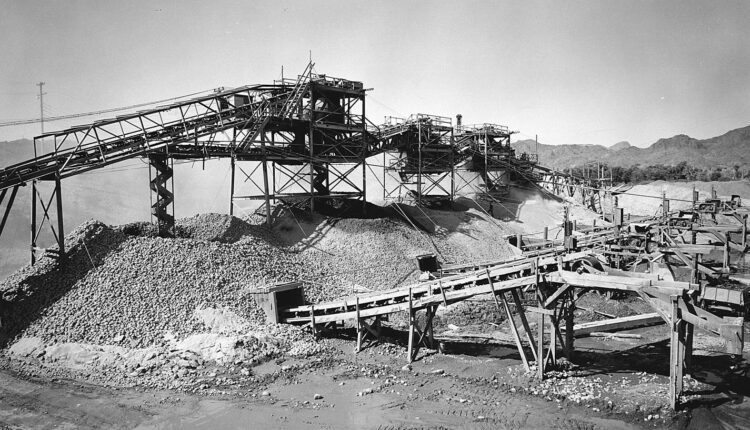
Meyer Lansky in 1958. (Al Ravenna, World Telegram/Public Domain)
We go beyond what’s been told by Hollywood to unpack Las Vegas’ strong ties to the Mafia.
Any fan of Martin Scorsese movies will likely tell you they know the history of the Mafia in Las Vegas. The iconic director’s 1995 film “Casino” tells the story of Sam “Ace” Rothstein, who ran multiple casinos in Las Vegas from the late 1960s to the early 1980s.
Rothstein’s character is based on Frank “Lefty” Rosenthal, a professional sports gambler turned casino executive with Mob ties who ran the Stardust, Marina, Fremont, and Hacienda casinos in Las Vegas after fleeing to the city from Chicago to escape police attention.
Based on Nicholas Pileggi’s nonfiction book “Casino: Love and Honor in Las Vegas,” the movie stuck relatively close to the true story, though Scorsese did take plenty of artistic license in crafting his dramatic narrative.
What’s more, when it comes to the Mob’s strong ties to Las Vegas, the story of Rosenthal’s expulsion from Sin City is more like the end of a long story rather than the full tale. Let’s take a look back some decades earlier to see how organized crime got its grasp on Las Vegas.
The 1940s: Bugsy Siegel Has a Vision
Having built a name for himself among fellow gangsters and law enforcement in New York as an associate of Meyer Lansky and Lucky Luciano during the Prohibition era, Benjamin “Bugsy” Siegel moved west in 1936 to escape the heat.
Having originally settled in Southern California, he found a more literal type of heat in Las Vegas, where he saw the potential to make a fortune in horse racing and casino gambling following the legalization of the practice in Nevada in 1931.

Benjamin “Bugsy” Siegel (center) with attorneys Max Solomon and Isaac Pacht after Siegel’s move west. (LA Daily News/CC BY-SA 4.0)
Financed by his friends back east, Siegel took over the construction of The Flamingo Hotel and Casino in 1945. The project was a disaster, however, and two years later, with The Flamingo nearly $5 million over budget, Siegel was killed in a hail of gunfire that came crashing through the front windows of the Beverly Hills home he shared with actress Beverly Hill.
According to The Mob Museum, a nonprofit organization located on Stewart Avenue in downtown Las Vegas, Siegel’s murder has never been solved, but it’s believed that his associates carried it out, led by Lansky.
The 1950s-60s: Lansky Claims the Land
Having walked into The Flamingo and claimed ownership of The Flamingo on the night his former partner Bugsy Siegel was killed, Meyer Lansky’s syndicate spent the following two decades building Las Vegas into gangsters’ (and gamblers’) paradise.
Lansky is credited with fixing Siegel’s mistakes and turning casino gambling into a huge moneymaker in Las Vegas. He was known to be connected to illegal operations throughout the country and even made efforts to build casinos in Cuba before the communist revolution there. But Las Vegas is where the kingpin centered his kingdom.
Throughout this era, casinos like Dunes, New Frontier, Riviera, and the Sands were built with money from organized crime. Stars like Frank Sinatra and Elvis Presley were known to frequently perform at the behest of these bosses, building the Strip’s reputation into a glitzy and glamorous place.
Mob bosses like Lansky became well-liked and respected leaders in Las Vegas, making millions from money laundering, skimming, and other violent criminal activities. In 1972, Lansky was indicted on charges that he and others had skimmed millions of dollars from a Vegas casino that they owned, but the indictment was eventually thrown out when Lansky was ruled to be too ill to face trial. Lansky died of lung cancer in 1983 at age 80.
The 1970s: The End of an Era
In the late 1960s, famed aviator and business magnate Howard Hughes began buying up Mob-connected hotels and casinos on the Strip, spending around $300 million in a spree that would usher in the era of corporate conglomerates running casino gambling in Las Vegas.
In 1969, the Nevada Legislature passed the Corporate Gaming Act, which licensed key investors and executives to own casinos rather than individual stockholders. The legislation loosened the Mob’s grip on the town, but it didn’t end it.
In 1971, Anthony Spilotro arrived in town, sent by the Chicago Mob to take over loansharking operations and other activities after his predecessor, Marshall Caifano, became one of the 11 original people listed in the infamous Black Book, created by state gaming regulators to banish unsavory characters from the Nevada casino industry.

An FBI mugshot of Anthony Spilotro in Chicago. (Federal Bureau of Investigation/Public Domain)
Serving as the basis for Joe Pesci’s portrayal of Nicholas “Nicky” Santoro in “Casino,” Spilotro would go on to terrorize the Strip as an enforcer and hitman for the Chicago Mob. He also ran a burglary ring dubbed the Hole in the Wall Gang for their tendency to simply drill through the wall of any establishment they wanted to rob.
Spilotro took a lot of heat from law enforcement but somehow stayed out of prison for a decade with the help of well-known Mob lawyer Oscar Goodman. By 1981, however, federal investigators were closing in on the high-profile gangster.
Despite the dissolution of his burglary gang and cooperation from one or two of his close associates, Spilotro remained free for another five years. He may have rather been in prison, however, as he was found battered to death and buried in an Indiana cornfield in 1986.
As for Spilotro’s old partner Rosenthal, he was added to the Black Book (then removed, then added again) and eventually moved to Florida, where he ran a sports bar and did consultation work for offshore sports betting companies. Following his death in 2008, it was revealed that Rosenthal was at some point an FBI informant, which likely explains how he was able to avoid prison for all those years.
While loansharking and other organized crime kept a presence along the Las Vegas Strip, it never reached the levels before the days of Spilotro. Meanwhile, the infamous gangster’s lawyer, Oscar Goodman, known for courting the media and spinning his own narratives, went on to serve as Las Vegas’ mayor for 12 years from 1999-2011.
This article first appeared on Good Info News Wire and is republished here under a Creative Commons license.

Here’s a look at four parks lost over the past 120 years.
From bathhouses and petting zoos to Wild West replicas and log flume rides, Northern Nevada has had a long history of amusement parks geared for...

11 best movies set in Nevada
From its mountains to its deserts and Las Vegas, Nevada is the perfect backdrop for films. These 11 movies set in Nevada will make you proud to be...

Gone but not forgotten: 5 Las Vegas attractions that no longer exist
The following five Las Vegas attractions no longer exist, from an Old West town to an elaborate water park. The Las Vegas philosophy must be "easy...

Blast from the past: Nevada’s bizarre nuclear testing culture
Between 1951 and 1992, significant nuclear weapons tests lit up Nevada skies. The atomic mushroom clouds and bursts of light are still a pop culture...

Black History Month explained: Its origins, celebrations and myths
By HAYA PANJWANI Associated Press WASHINGTON (AP) — Beginning Feb. 1, schools, museums and communities across the nation will mark the start of...

7 sunken treasures in the waters beneath Hoover Dam
From fighter jets to ghost towns, here are 7 sunken treasures hiding in the waters of Lake Mead and Hoover Dam. There aren’t any mystical mermaids...




